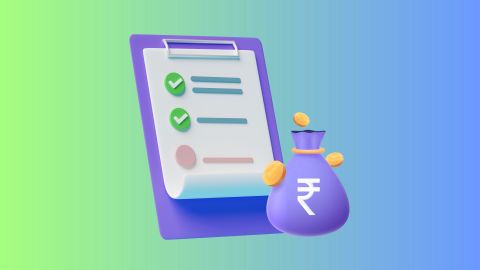When looking to borrow a loan the common mistake made by most individuals is to decide on the loan amount on their need and eligibility. For instance, if you are in the process of renovating your home, you would take out a personal loan for the amount you need for the task. However, this may not always be the right approach to take. Your ability to comfortably manage the EMI plays a significant role in your financial well-being. Full form of EMI is equated monthly instalments, it includes a part of your principal amount and interest on it. Hence, it is important to understand the impact of EMIs on your monthly budget and plan your repayments better.
A guide to help you assess and determine how much EMI you can afford
- Evaluate your monthly income: Begin by understanding your monthly income, your salary, bonuses, and any additional sources of revenue. This forms the foundation for calculating a manageable EMI.
- Assess fixed expenses: Take stock of your fixed monthly expenses, including rent, utilities, groceries, insurance, long-term investments, and other non-negotiable costs. Deduct these from your monthly income to determine the surplus available for loan repayments.
- Consider variable expenses: Factor in discretionary spending, such as dining out, entertainment, and personal indulgences. While these expenses may vary, acknowledging them helps create a realistic budget. In fact, it is advisable to average out a year’s discretionary expenses to determine a fixed monthly amount.
- Calculate debt obligations: Account for any existing loans or credit card payments. This step is crucial in understanding your current debt commitments and how much additional EMI you can comfortably accommodate.
- Determine savings goals: Establish financial goals and allocate a portion of your income towards savings. A healthy balance between loan repayments and savings is vital for long-term financial security.
- Use the debt-to-income ratio: Financial experts often recommend a debt-to-income (DTI) ratio of 40% or lower. Calculate your DTI by dividing your total monthly debt payments by your gross monthly income. This ratio helps lenders assess your capacity to take on additional debt responsibly.
- Consider the loan tenure: Longer loan tenures generally result in lower EMIs but may accrue higher interest over time. Strike a balance based on your financial goals and the total interest that you are willing to pay.
- Use online EMI calculators: Leverage online tools and EMI calculators provided by financial institutions. You can use the Bajaj Finserv Personal Loan EMI Calculator to determine the instalment for the loan amount you seek to borrow. Input your loan amount, interest rate, and tenure to get an estimate of the monthly installment. This aids in planning your loan amount and the EMI and fine-tuning your budget.
In conclusion, determining how much EMI you can afford requires a holistic evaluation of your financial landscape. By understanding your income, expenses, savings goals, and debt obligations, you can strike a balance that ensures responsible financial management. Remember, choosing an EMI within your means provides the stability needed for a secure and stress-free financial journey.
If you are looking for funds for any of your needs, Bajaj Finance offers personal loans of up to Rs. 55 lakh. With these loans, you get the liberty of choosing a loan tenure ranging between 12 months and 96 months. You can also explore our Flexi Loan variants that allow you to borrow when you need and prepay when you can, with interest charged only on the amount that is withdrawn. With our Flexi Hybrid variant, you also have the benefit of paying interest-only EMIs for the initial tenure of the loan.




